What is a F1bb Goldendoodle? (Guide with Photos)
The F1BB Goldendoodle is a crossbreed dog which is 87.5 percent Poodle and 12.5 percent Golden Retriever. To understand the genetics of a F1BB, we first need to understand the origins of a Goldendoodle and why it’s such a popular pet choice.
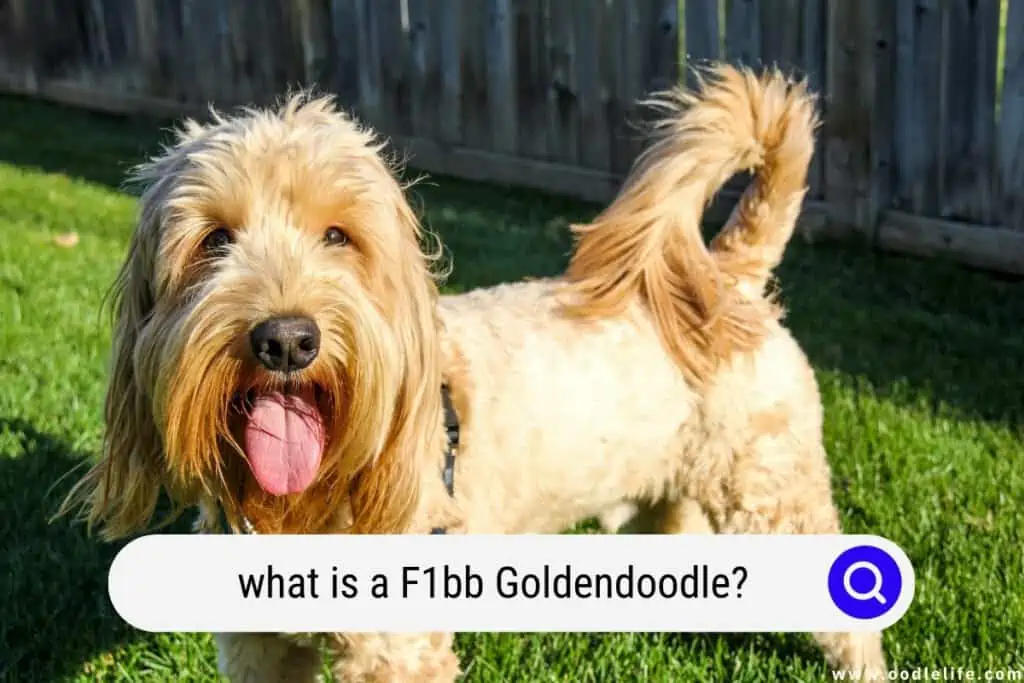
Goldendoodle
A Goldendoodle, a cross between a Golden Retriever and a Poodle, is a fairly new crossbreed, developed in the 1990s. They are a popular choice for family dogs because of their limitless energy and friendliness. Goofy, playful, loyal and loving are some other adjectives that are commonly used to describe this adorable bundle of energy.
Goldendoodles also fall under the category of ‘hypoallergenic’ dogs – which shed less and are therefore perfect for people with dog allergies.
Understanding Goldendoodle generations can be a bit tricky and even experienced Goldendoodle parents get confused at times. However, once you know the basics it is quite simple to understand.

What Does The F Stand For?
The F simply stands for “Filial Hybrid.” This means that the dog is a crossbreed coming from two purebred parents. “F” is used to signify every generation.
What Does The Number Signify?
The F is always followed by a number, 1, 2, 3 – which signifies the generation of the breed, so 1 is 1st generation, 2 is second generation, and so on.
What Does The B Mean?
The B stands for backcross. This means that the current Goldendoodle generation was crossed with a purebred Poodle.
Backcrossing with the Poodle is made to increase the percentage of Poodle genes in the Goldendoodle gene pool. Backcrossing with the other parent, a Golden Retriever, is rarely done. The dominant traits and features of the Poodle are what make the Goldendoodle much in demand.
Two “Bs” in the name indicate that the generation was backcrossed twice with the Poodle. Follow the below chart to understand the percentage of DNA present from each parent:
| Generations | Parent 1 | Parent 2 | Poodle Percentage | Golden Retriever Percentage |
| F1 | Golden Retriever | Poodle | 50 | 50 |
| F1B | F1 Goldendoodle | Poodle | 75 | 25 |
| F1BB | F1B Goldendoodle | Poodle | 87.5 | 12.5 |
| F2 | F1 Goldendoodle | F1 Goldendoodle | 50 | 50 |
| F2B | F2 Goldendoodle | Poodle | 62.5 | 37.5 |
| F2BB | F2B Goldendoodle | Poodle | 81.25 | 18.75 |
| F3 | F2 Goldendoodle | F2 Goldendoodle | 50 | 50 |
F1BB Goldendoodle
Now that we have an understanding of the different Goldendoodle generations, let’s learn more about the F1BB Goldendoodle.
As you can see in the above chart the F1BB Goldendoodle is the one with the highest Poodle percentage. The F1BB generation is backcrossed twice with the Poodle parent, making it a minimal shedder. It is thus an ideal choice for families with moderate to severe pet allergies.
Also, the percent of the parent DNA determines many of the characteristics of the generation. So, an F1 will be very different from an F1B, an F1BB very different from F1 or F1B, and so on.
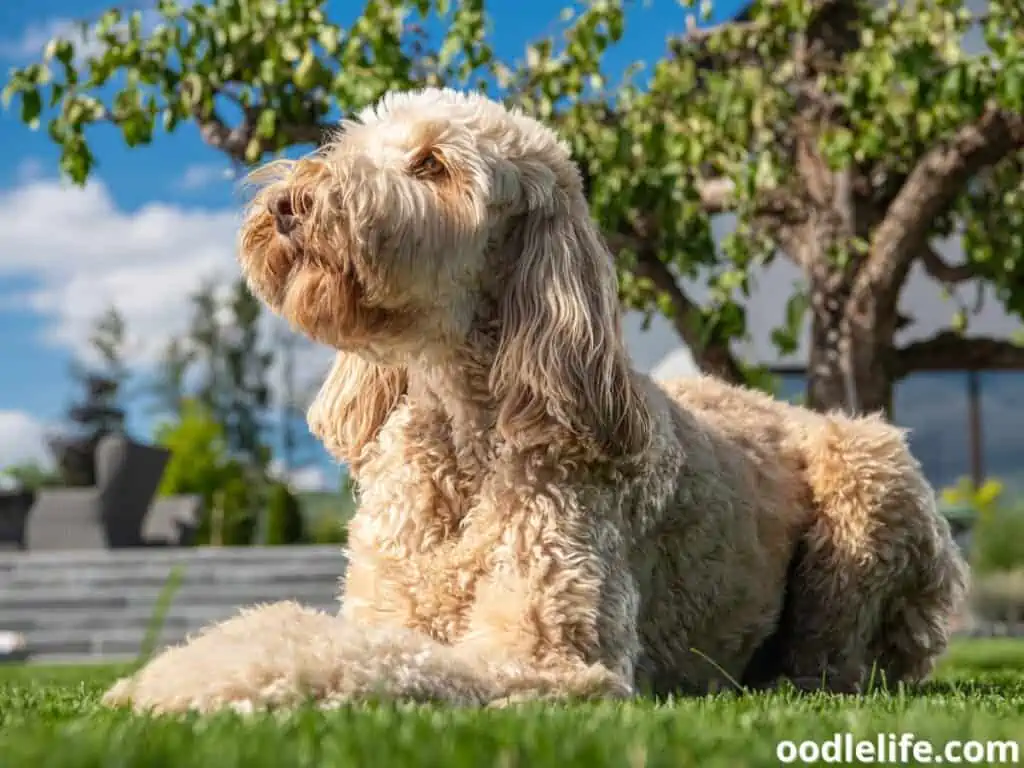
Size and Weight of the FB11
The F1BB Goldendoodle is larger than the Poodle. They come in medium and mini sizes standing between 20 to 29 inches at the withers. They weigh between 14 and 20 kg.
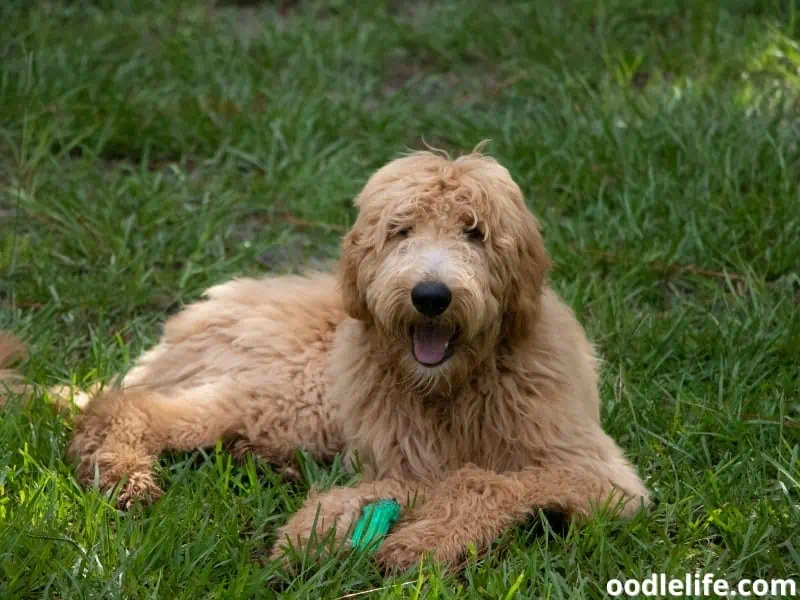
Life Expectancy
To understand the life expectancy of the F1BB Goldendoodle, let’s first consider the lifespan of the parent breed and the Goldendoodle.
- The Golden Retriever has a lifespan between 10-20 years.
- A Poodle has a lifespan between 10-18 years.
- The average lifespan of a Goldendoodle is between 10-14 years.
The lifespan of the individual Goldendoodle generation will depend upon a multitude of factors including height, genetic makeup, diet, etc. So it is obvious the lifespans of an F1, F1B, F1BB, etc. will all be varied.
The average life expectancy of an F1BB Goldendoodle is between 12-15 years. However, there are several factors like diet, exercise, and of course genetic luck that can alter the range.

Exercise Requirements
Both the parents of Goldendoodle are high on energy, so no surprise that your Goldendoodle will need a big dose of daily exercise. At least an hour of active exercise is required and recommended daily.
You can take F1BB for 20 mins walks thrice a day or 30 mins walks twice a day.
It is essential that the dog runs around, stretches, and plays. And although the Goldendoodle adjusts well to apartment life, it is essential that the dog be taken to dog parks at least weekly. Houses with fenced yards can leave their dogs to play in the yard for regular periods.
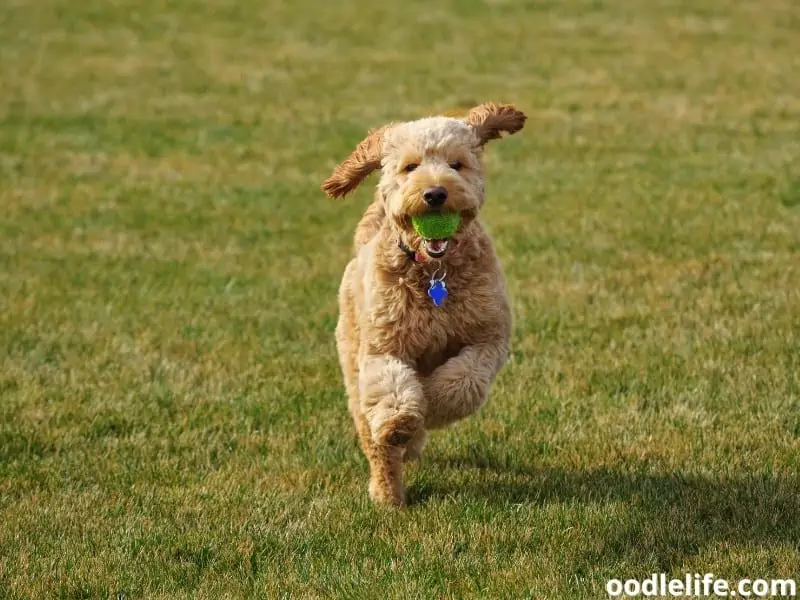
Hypoallergenic Traits
Goldendoodles were bred mainly for their hypoallergenic nature. Over the years, the crossbreed is selectively bred to achieve perfection in their hypoallergenic trait. The high number of Goldendoodle generation is the result of this breeding experimentation.
Amongst all Goldendoodle generations, the F1BB has the most hypoallergenic traits. The generation comes in various lovely colors like cream, brown, apricot, black, and red. And when the puppy reaches the age of nine to sixteen months, its coat may change color.
What does not change is their coat type. The F1BB dons a curly coat that is very silky. Their hypoallergenic nature is due to the fact that the curly coat traps any loose hair. This stops the dispersion of hair around the house.
But a curlier coat also means regular brushing and grooming without which the coat will get matted and become a home to parasites and infections.
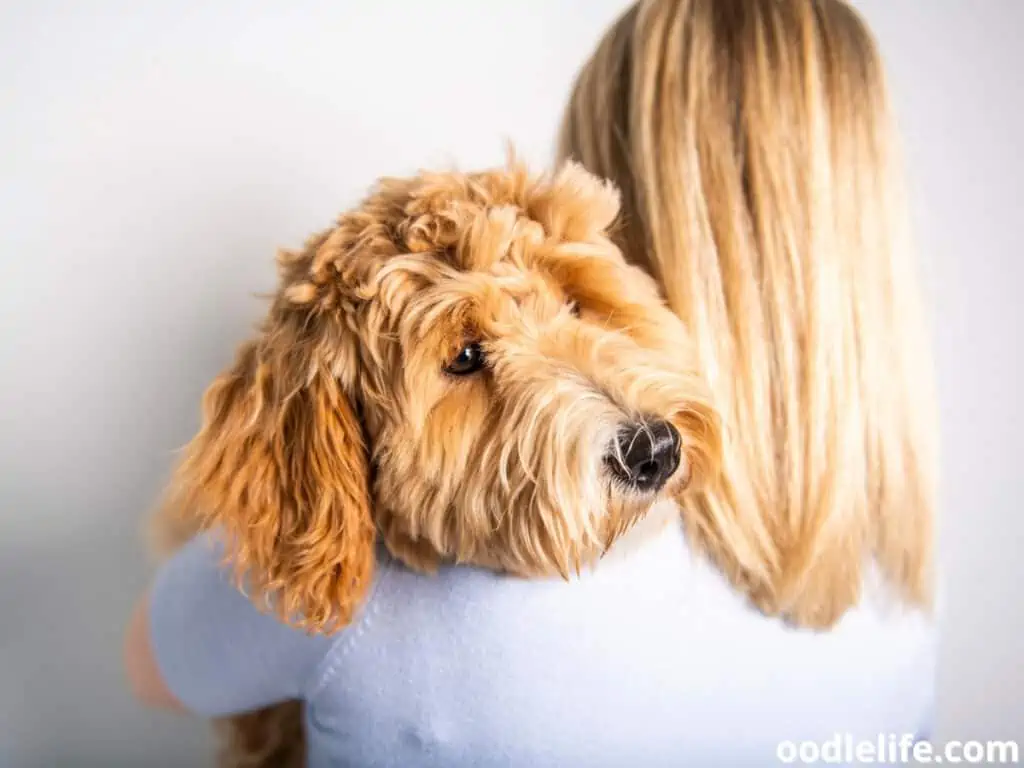
Personality and Temperament
The FB11 has a sweet disposition, is affectionate and very loyal.
They love to spend time with their humans and are blindly devoted to them. They are fun to be around and socialize well with almost everyone. From cats to dogs, and kids to adults, everyone can be seen charmed by this cheerful dog who makes friends in an instant.
They are also intelligent and fast learners, which makes training them very easy. Also, their heightened sense of smell along with their intelligence makes them terrific sniffing dogs and trackers.
Along with being amazing pets, the dogs also make great service dogs and therapy dogs. However, the dogs are known to develop a stubborn streak. If not properly trained and socialized early in their development, the dogs may develop negative temperaments.
This becomes a source of unhappiness for both the dog and the owner and is the reason why you may find a Goldendoodle in a shelter.

Training
Training F1BB Goldendoodle is easy, even for first-time parents. The dog is fun-loving, high on energy, and loves to please its humans. However, they are also stubborn, a characteristic gained from their Poodle parents.
And as the F1BB generation is closer to the Poodle there is a high chance that your dog may develop a stubborn streak.
To avoid this, start training programs early. Responsible breeders start puppy training and socialization right after birth. Also, the dog doesn’t respond well to harsh words.
Positive reinforcement is the key to training F1BB Goldendoodles. Rewards and praises make up for successful training programs.
Some of the training that you can give your dog is obedience and agility training. This will improve your bond with your dog and will help him socialize with other dogs.
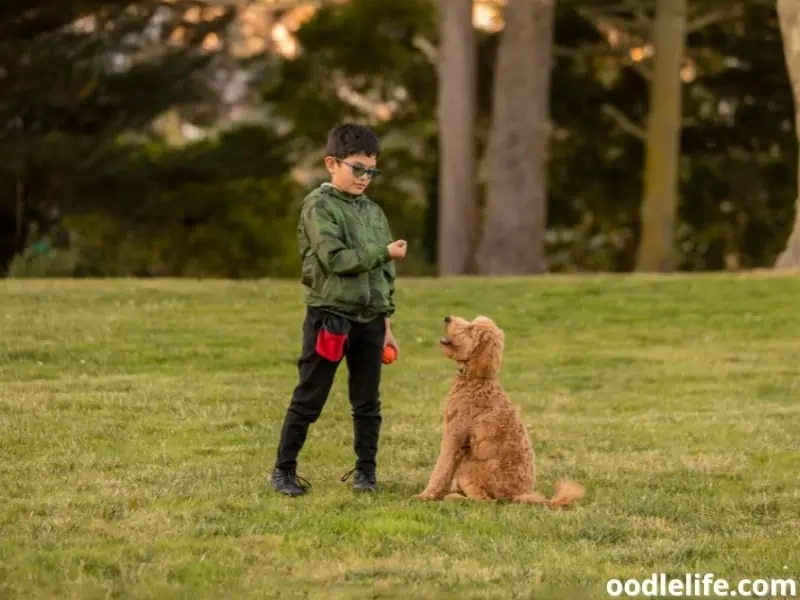
Health
Goldendoodles are crossbreed dogs, and as such, they carry the genetic material from two parent breeds. There is an argument amongst experts with respect to the health of crossbreeds. While some consider them to be healthier than the parents, others argue that the breed has its own health issues and is more susceptible to developing certain diseases.
Some consider the F1 generation to have hybrid vigor. This means that the generation is healthier and less prone to the health issues faced by the parents. This is because crossbreds have the genetic makeup of two gene pools.
This increases genetic diversity and reduces the chances of genetic disorders.
However, the F1BB generation is much closer to the Poodle and thus does not have much genetic diversity. Despite the limited gene pool, the dogs are found to be much healthier. Although there are certain health issues that are common to the breed.
Some of them are:
- Elbow dysplasia
- Von Willebrand’s Disease (VWD)
- Hip dysplasia
- Subaortic stenosis
- Progressive Retinal Atrophy or PRA
- Juvenile cataracts
Hip Dysplasia
Hip dysplasia is a hereditary disease. It happens when the ball and the socket joint of the hip do not fit correctly. This leads to grinding at the joints instead of a smooth slide.
Over time the joint deteriorates and loses its function which makes it hard for the dog to move.
Factors such as unbalanced nutrition, obesity, type of exercise, and excessive growth rate can magnify the condition.
The condition is very painful and affects the dog’s quality of life. It also becomes a source of heartache for the owners to watch their dog go through so much pain. Educating oneself about the condition, taking proper precautionary methods, and choosing a responsible breeder can save you and your dog a lot of pain.

Elbow Dysplasia
Elbow dysplasia is the abnormal development of the elbow joint. This happens mostly in dogs with a rapid growth rate. The joint is made up of three bones.
Any abnormal growth in these bones, cartilage development, or joint stresses can be the reason behind Elbow dysplasia.
The pain and discomfort are due to the irregular weight distribution due to a defective joint. The disease can even lead to the development of arthritis and lameness.
Elbow dysplasia is very difficult to watch and considering the high occurrence of the disease, breeders must follow health testing practices. OFA testing the parents and siblings can help determine if the dog is prone to developing elbow dysplasia.
Progressive Retinal Atrophy
Progressive retinal atrophy is a hereditary disease that affects the eye. The disease affects both the rod and cone cells, and thus affects both day and night vision. The disease development starts with loss of night vision followed by complete loss of sight.
Since Poodles have a high susceptibility to the disease, it is very much likely that F1BB Goldendoodles develop the condition. And although there is no treatment for the hereditary disease, buying from ethical breeders who test their parent dogs for the disease is the best solution.
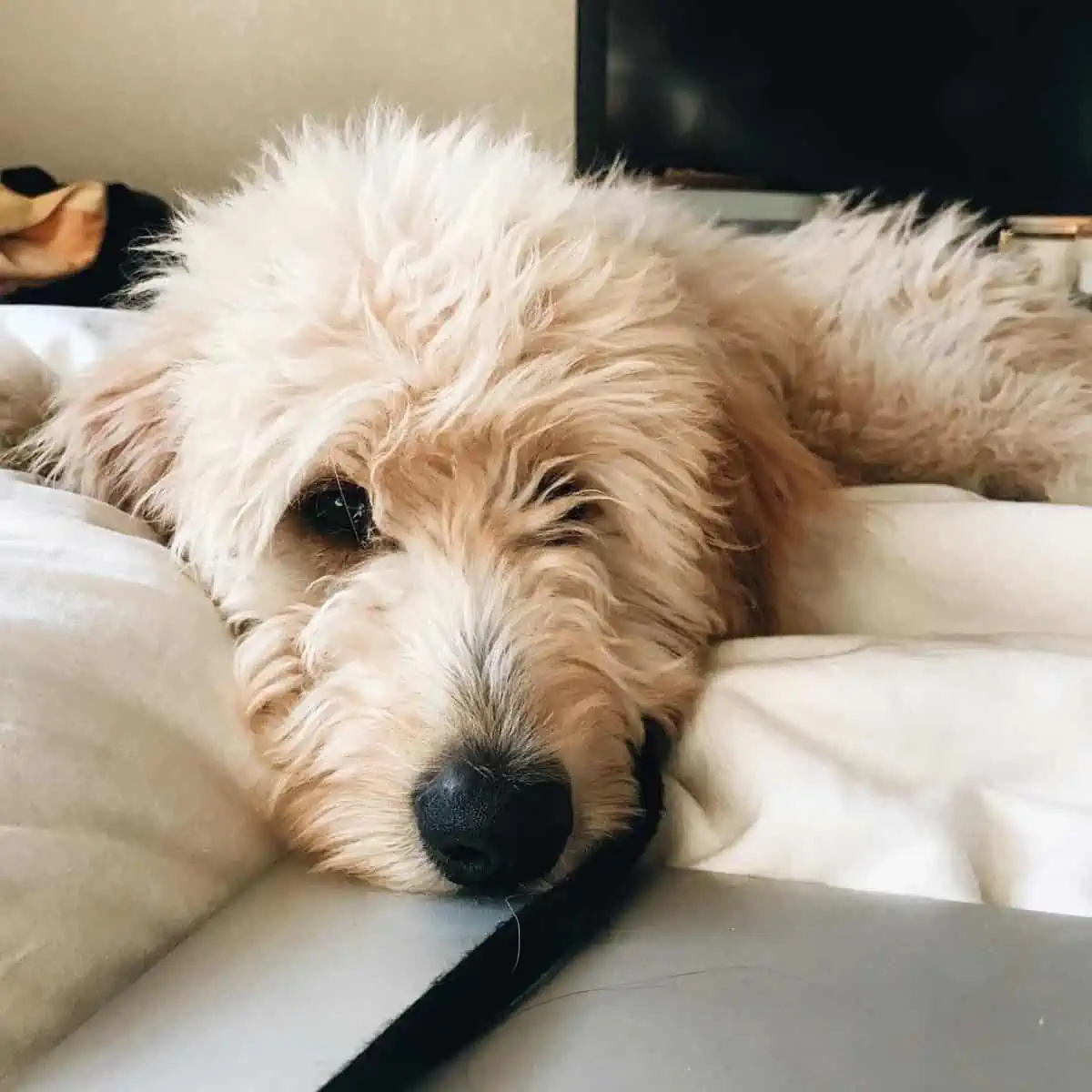
Von Willebrand’s Disease
Abbreviated to VWD, Von Willebrand’s Disease is a bleeding disorder. The disease is caused by the absence of a protein responsible for controlling bleeding of an injured vessel. The disease is hereditary and unfortunately, there is no cure.
The disorder can become fatal when there is continuous unchecked bleeding.
Juvenile Cataracts
Juvenile cataracts can be spotted as early as 6 months of age. However, some puppies are born with a cataract. The cataract is mostly visible as a white spot on the puppy’s eye along with symptoms that point to faulty vision like bumping into things.
While the disease does not progress fast, sometimes the cataract can become large enough and affect the vision of the dog. For severe cases, immediate treatment and even surgery may be required.
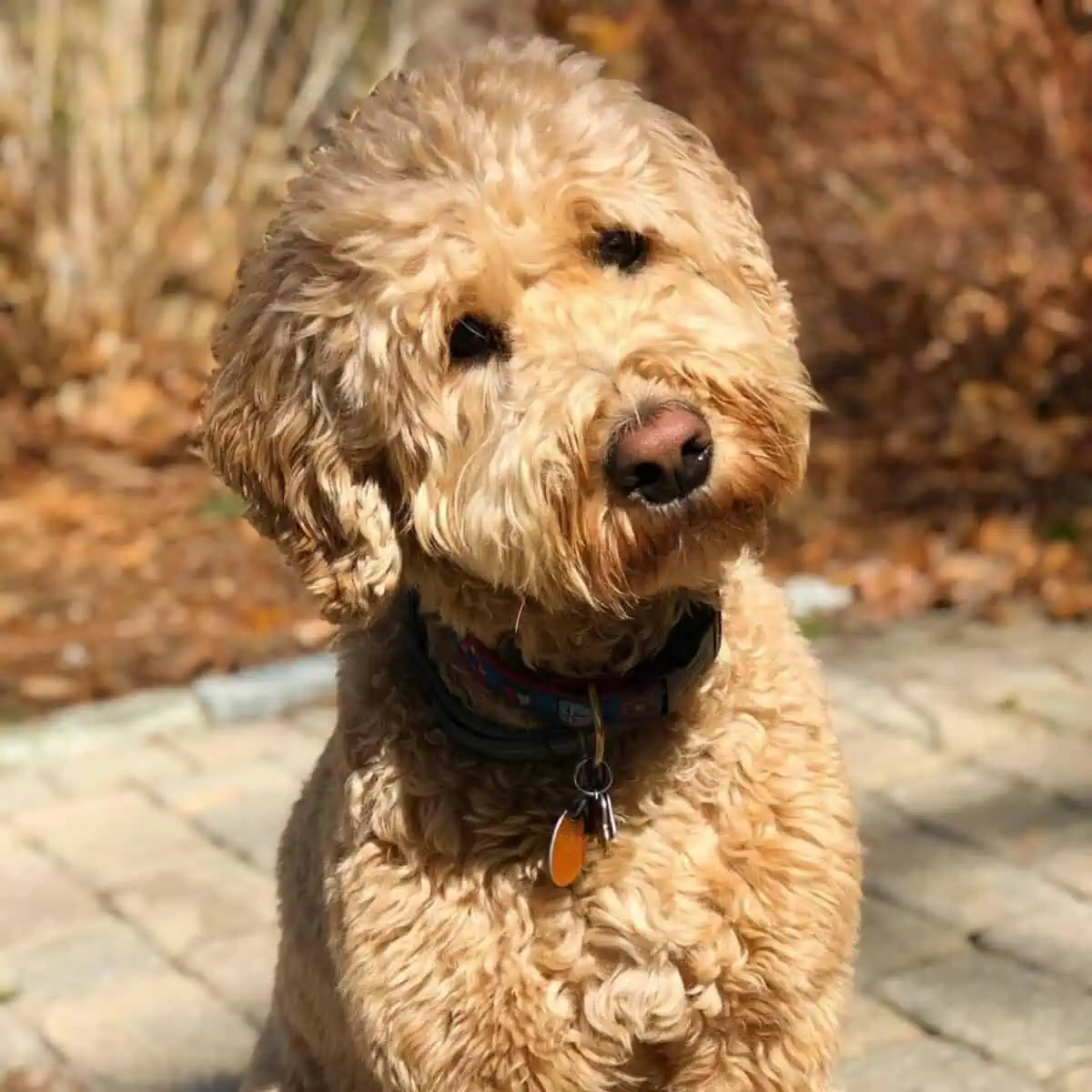
Subaortic Stenosis
Subaortic Stenosis is a heart condition that affects the proper flow of blood through the heart. Although the disease is present at birth, it starts developing during the first year of the dog’s life.
This hereditary disease greatly reduces the quality of life and also the lifespan. Dogs suffering from the condition are intolerant to exercise and have fainting spells. An F1BB Goldendoodle suffering from Subaortic Stenosis has a reduced life span of 5-7 years.
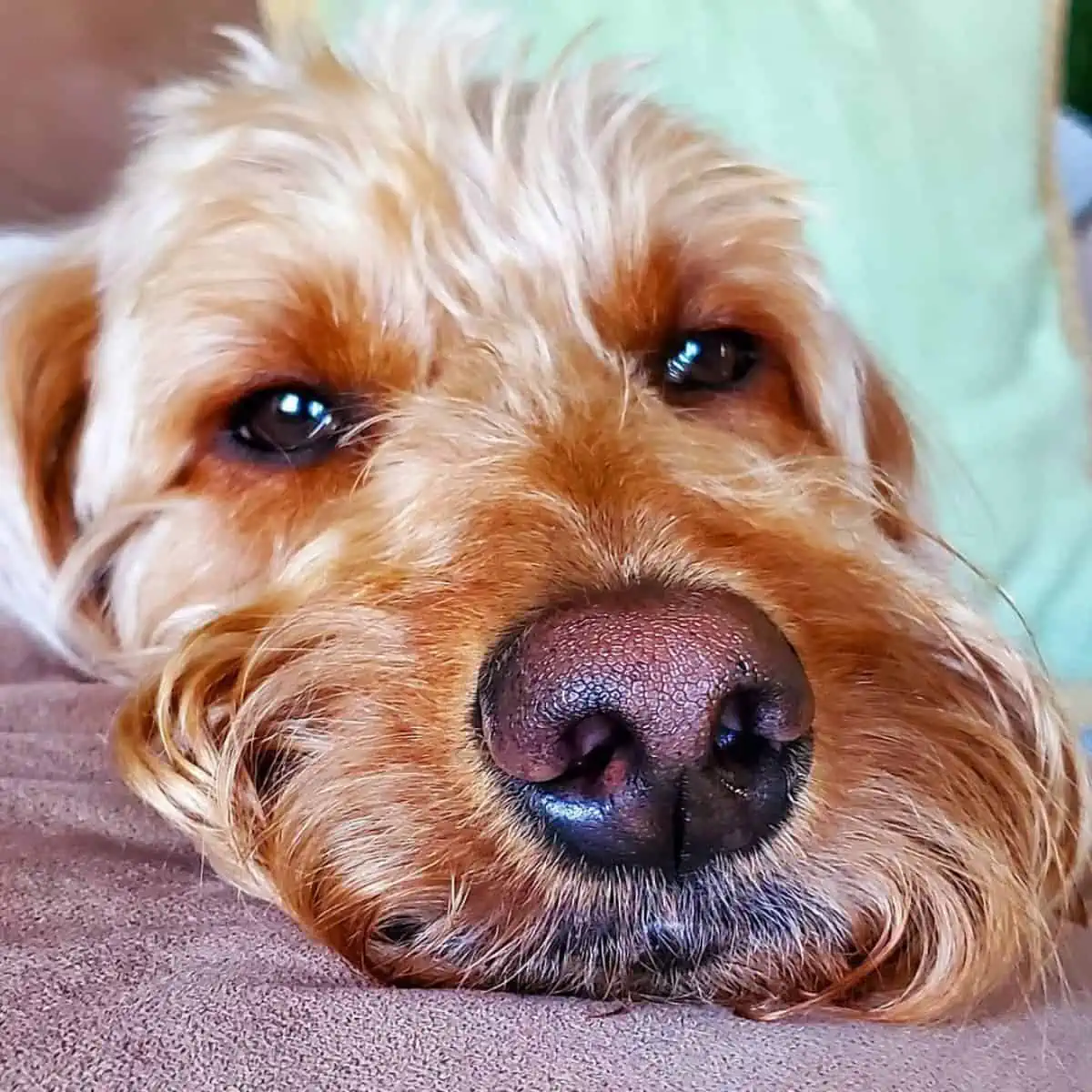
Caring for F1BB Goldendoodle
Having a dog is a big responsibility. From grooming to health, and exercise to training every dog needs to be taken care of.
And although the F1BB Goldendoodle is low shedding, the dog still has grooming requirements. In fact, low shedding means a curlier coat which implies higher grooming needs. You can opt to groom your F1BB Goldendoodle by yourself or employ the services of a professional groomer.
Also, the dog will need regular brushing with a dematting comb and a slicker brush to avoid matting.
As far as bathing is concerned, once every couple of months is enough. Bathing too often dries and damages the dog’s skin. This leads to further issues and a poor-looking coat.
The dog must be fed a well-balanced nutritious diet and aided with supplements. This ensures that the dog doesn’t develop any dietary-related health issues.
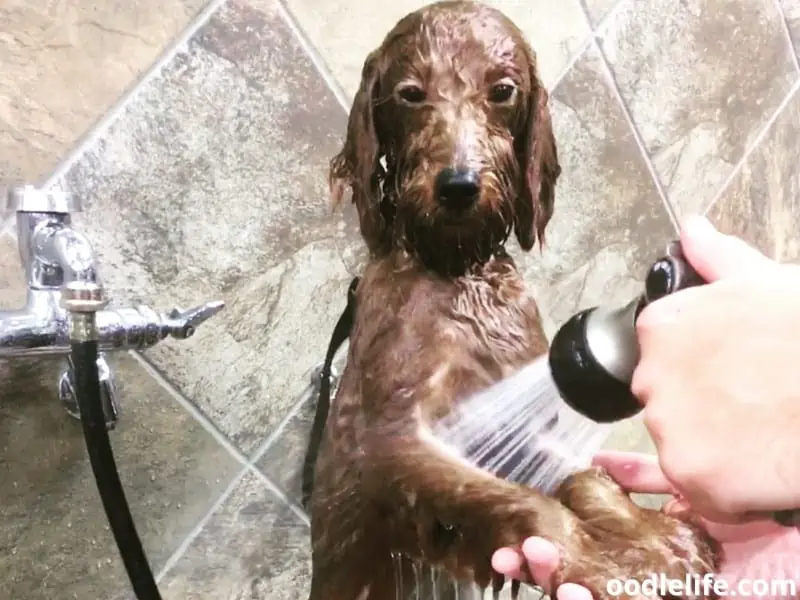
Cost of F1BB Goldendoodles
F1BB Goldendoodle are designer dogs and not as common as F1 Goldendoodles. Also, the health issues faced by the crossbred have led to many health testing practices. Apart from this, the puppies also need early neurological stimulation, training, and socialization which further ups the prices.
Puppy pricing depends upon the health testing and puppy raising techniques employed by the breeder. It also depends upon the size of the puppy and the coat type and color. The price ranges from $2,000 to $5,000.
It is always better to invest in a responsible breeder than suffer from heartache and unnecessary costs later.
Should I Get a F1BB Goldendoodle?
F1BB Goldendoodles are a beautiful, loyal, and friendly dog breed. If you’re looking for a family-friendly dog who’s highly intelligent and easy to train, then this is the dog for you.
It is of course important to remember that any dog, no matter how easy-going, requires love, attention and commitment.
